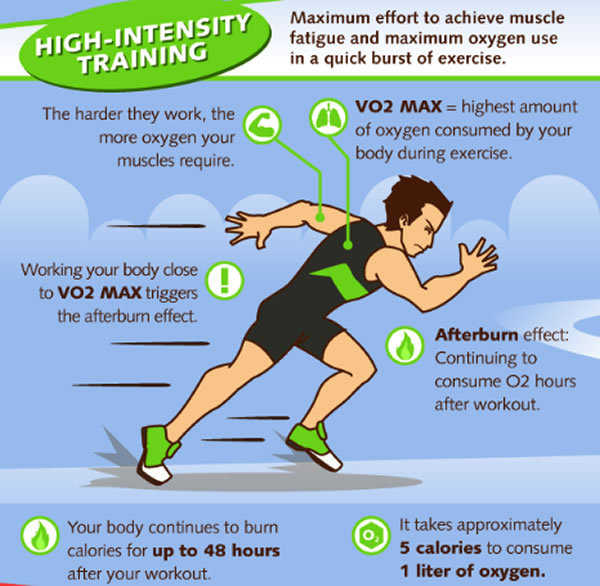- drinking goat milk for weight loss;
- What is HIIT cardio?!
- weight loss doctor in ottawa il;
- first place you gain weight last place you lose;
Jogging 3 miles times per week is the normal routine most people undertake to shed unwanted fat. Let me start by saying this routine is better than nothing, and fat can definitely be lost partaking in this type of program.
HIIT Vs Steady State - Which Type of Cardio Is Better? - Elevate Fitness
For individuals who enjoy to jog for relaxation or social interaction I am all for it. However, for individuals trying decrease fat and maximize lean mass it is far from optimal and elicits no superior health benefits. High intensity interval training HIIT is currently making waves in the fitness industry, and for good reasons! HIIT is characterized by bouts of high and low intensity in various ratios.
HIIT Vs Steady State – Which Type of Cardio Is Better?
The majority of people looking to lose some fat would benefit more from HIIT than steady state assuming they have no health restrictions. Most activities we encounter on a daily basis - including those done by you hardworking athletes - are fueled by the aforesaid.
- Going Steady: 5 Reasons To Do Steady-State Cardio.
- vegetable soup for weight loss in tamil;
- Watch Next!
- Steady State Cardio vs HIIT: Which is Superior for Fat Loss? - Applied Fitness Solutions?
- reduce face fat weight lifting;
- secret fat burner south africa;
- 4 Big Reasons Women Should Never Do Steady State Cardio | Yuri Elkaim?
- What Steady-State Cardio Does to Your Body!
- weight loss center glendale;
- It may not feel “hard”—and that’s a good thing.!
- The Players!
- Is HIIT Really Better Than Low-Intensity Cardio for Weight Loss?.
Stored adipose fat is akin to the U. Only under extreme conditions do you use it. When fat is moved into long-term storage, it becomes this last resort. For your body to rely solely on the stored "oil reserve" adipose fat, it becomes a major project that entails specific attention and discipline regarding proper nutrition and appropriate exercise. But wait, it gets even worse.
From a cost-benefit angle , solely performing lower-effort exercise - such as steady state cardio - can burn more fat in relative terms, but not in absolute amounts.
Steady-State Cardio Vs. High-Intensity Interval Training
When you are in the low-effort, steady state mode, the aforementioned more readily available energy options stored glycogen, circulating blood glucose, intra-muscular fat can be spared. But training at such a minimal level of effort to solely target adipose fat as energy would be like tossing a deck chair off the Titanic. It would be only a drop out of a full five-gallon bucket.
I think you get the idea. Less-taxing activities burn more relative fat, but only a small amount.
Why Steady State Cardio Doesn’t Work
Training in this manner to supposedly zero-in on stored fat is not efficient. As mentioned in my previous article, maximally burning stored body fat through exercise is about two issues: high-effort, immediate energy depleting exercise and muscle-preserving resistance training. Here is the rationale. You now know that working with greater intensity and using a lot of muscle can deplete your immediate energy stores. Depleting blood glucose, stored glycogen, intramuscular fat, and free fatty acids through high-intensity work means the body must then obtain energy from other sources.
This is where you force it to go after the adipose fat in two ways. Post-workout, when your body is emptied of the immediate energy sources, you require stored fat to assist in the recovery proces s. Your workout session is digging the hole.
You can build up strength and endurance for longer workouts.
The more demanding it is, the deeper the hole. Your recovery nutrition is the filler.
If you slightly under-fill the hole but still provide proper nutrients , then more recovery energy may then be pulled from stored adipose fat. In addition, you don't want your body to feast on metabolically active muscle tissue. This is why resistance training - usually a missing component in most fat-loss programs - is critical.

Resistance training either preserves or builds muscle mass. By stimulating muscle tissue via hard resistance training your body will further be forced to tap into stored adipose fat for recovery energy. Maintaining or growing new muscle tissue - which gives you the shape you are seeking - can counter a caloric deficit and your body's desire to catabolize muscle tissue.
Here's the obvious message. Get your butt in the weight room and train like a madman or madwoman if you truly desire that lean physique.
